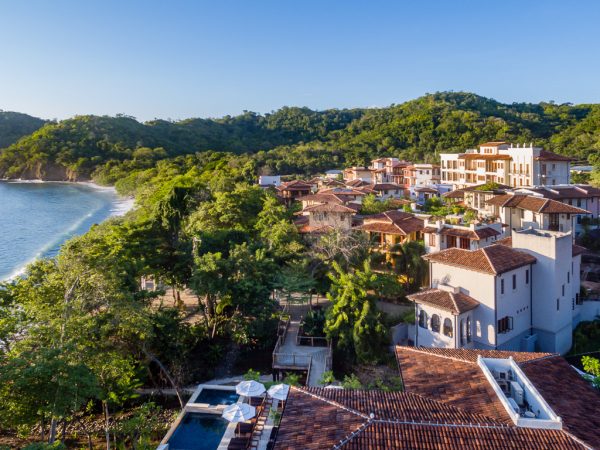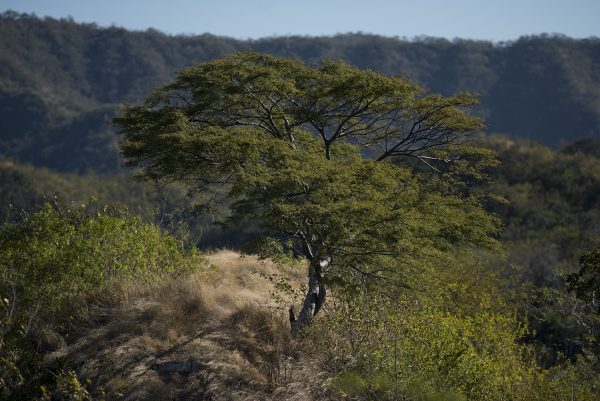New Urbanism on the Coast of Costa Rica
August 21, 2019
Urban planners, civil engineers, architects, and designers have spent centuries searching for the blueprint of utopia – the ideal town. It is a centuries-long quest for the architectural Holy Grail and while such a blueprint is likely never to be found, a new architectural trend known as New Urbanism is claiming to have the next best thing. It is a fast-growing movement that has literally laid the foundation for the town of Las Catalinas.
This urban design movement prioritizes environmentally-friendly development, walkable neighborhoods, and a diversity of intertwining private and public spaces. Core elements of New Urbanism seek to deliver on the unfulfilled promises of suburban life: pedestrian towns, mixed-use buildings settled into compact neighborhoods, harmony between private and communal spaces, and freedom from the stark trappings of a modern landscape. These communities are built upon principles of connectivity, sustainability and quality of life, all packaged into what appears to be the quintessential neighborhood.
Charles Brewer, founder of Las Catalinas, envisioned a town that is transforming itself into a beacon for the New Urbanism movement, which is why he didn’t hesitate to bring architect and New Urbanism expert, Douglas Duany, on board. Currently a professor at the University of Notre Dame, Duany has been involved in urban design projects in more than 10 countries and continues to play a pivotal role in the development of the Las Catalinas project.
“Las Catalinas is actually at the advanced front of New Urbanism,” says Duany. It’s highly responsive to topography, incorporates narrow streets and provides every house a view as well as relative privacy, all of which were special requests made by Charles Brewer from the outset of the project.
“Charles Brewer was very explicit about doing the best we could possibly do,” according to Duany, who embraced the unbridled freedom to build a utopian new urbanism outpost. “There are few developers that are willing to do that and that’s what makes bringing New Urbanism to Costa Rica so important.”
While this architectural approach may have been new to Costa Rica, Duany points out that the New Urbanism design that gave way to Las Catalinas actually took its lead from the blueprints of Medieval Rome. Between the 5th and 15th centuries, Roman settlements prioritized the public realm, while at the same time intermingling public and private spaces with a range of elements, including: courtyards, loggia, main squares, a tower, and small houses or guest quarters. Such high density and low impact architecture “is a very advanced system,” admits Duany, but it is also a system that allows for the greatest amount of green spaces for both environmental protection and personal enjoyment.

“New Urbanism is about inclusion: to create spaces where people can interact, where people aren’t obligated to use cars, where they can walk with their children, their spouses, their friends, and cross paths with others on the way,” says Jaime Rojas, director of infrastructure at Las Catalinas. “That sense of inclusion is the primary goal of the New Urbanism movement and part of what makes Las Catalinas unique from any other project in the country.”
In addition to promoting social interaction, the city’s landscape also prioritizes a harmonious and sustainable relationship between urban development and the natural environment, another pillar of the New Urbanism movement.
“The project aspires to be a model not only of urban planning, but also of environmental management,” says Michael García, director of environmental services at Las Catalinas. That commitment to sustainability is evident from a brief walk through the town’s green spaces, but is even more impressive when taking a look at the bigger picture.
Las Catalinas’ property spans approximately 472 hectares (1,166 acres), of which only 20% is viable for construction. The remaining space is dedicated to the conservation and restoration of natural habitats as well as other environmental services. To ensure reforestation and water conservation, more than five-thousand native trees have been planted on hillsides and watersheds. More than 30 km of hiking trails and 30 km of bike trails are hand-built with sustainable materials in order to conserve biodiversity and reduce the environmental impact, control erosion and runoff.

Not only is Las Catalinas designed to foster an eco-friendly, socially-inclusive new twist on the urban experience, it is also committed to supporting local communities. “We are working with residents and municipalities to solve problems and overcome the challenges of this unique project, not simply supposing that we would develop this project on our own,” says Rojas. Las Catalinas has also donated almost 4,000-square meters of land to the municipality of Santa Cruz and even helped transform an old police station in a nearby village into a children’s public recreation center.
The beaches, the landscape, the environment, “is something that belongs to all of us,” says García. From conception through execution, Las Catalinas strives to be a responsible and helpful neighbor and create a community that is in profound harmony with nature.
Perhaps Duany says it best: “The model of Las Catalinas is literally a model, and it allows people to notice how new development can produce community”.
